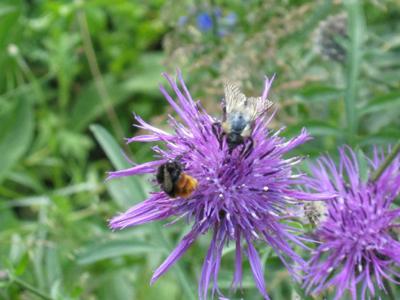We Need Joined Up Thinking From Councils To Protect Wildlife Habitats
One aspect of my campaigning for bees concerns the actions of councils. Indeed, I have a page on this website full of ideas for councils to help them protect and assist pollinators.
Councils are potentially in a very strong position to help bees and pollinators. After all, they manage large areas of public land, and importantly, they grant planning permission.
Many schemes to assist pollinators would actually save councils money: reducing mowing, including clover in grassy seed mixes. Indeed, some councils have already done much to embrace the challenge of
assisting pollinators.
At low cost, councils could achieve more by linking in with other councils, and organisations

- Linking up wildlife areas is a great idea, although there are occasions when it must be done carefully in order to actually protect species.
- Speaking with other councils about their conservation and wildlife efforts could help to facilitate the linking of pollinator habitats (road verges, river banks and so on). Beneficial ideas, could be rolled out to other councils if appropriate.
- Councils could seek input and even involvement with other organisations and groups, from schools, wildlife and gardening groups.
- Many councils have excellent websites, and could provide more links to helpful information resources.
Beware of 'greenwash'
Some apparently 'green' initiatives are unfortunately not so green after all. This was the case with a proposed solar energy park in an environmentally sensitive area, Rampisham Down, Dorset, UK.
The scheme would have necessitated construction work, movement of heavy vehicles and equipment into the area, and presumably the laying of cables. Once erected, the solar panels themselves would create shade at least for part of the day, and would require maintenance.
For me, despite the promise to deliver a 'green' benefit, it would have been disruptive for wildlife. This is not joined up thinking on sustainability.
Even if they had offered to create a pollinator meadow, this would not have been an environmentally friendly way to address energy provision. Far better to leave Rampisham Down to nature, and add the panels to the roofs of public buildings instead, such as council offices, schools, libraries and so on.
So what happened?
In the case of Rampisham Down, local people and wildlife organisations campaigned against the project, and a government inquiry resulted in the project being shelved.
Summary
By all means, encourage councils generally to be more
responsible, and ask them to commit to help pollinators. Here is a proposal for a national strategy for pollinators which can be adapted for local areas, to get you started. However, do be aware that even initiatives considered to be 'green' need to be examined carefully to weigh up the claimed future benefits, versus the impact and alternatives.
If you found this page helpful or interesting, I'd really be grateful if you would share it with others - if not this page, perhaps another, such as Gardening For Bees.
Thank you so much :) .